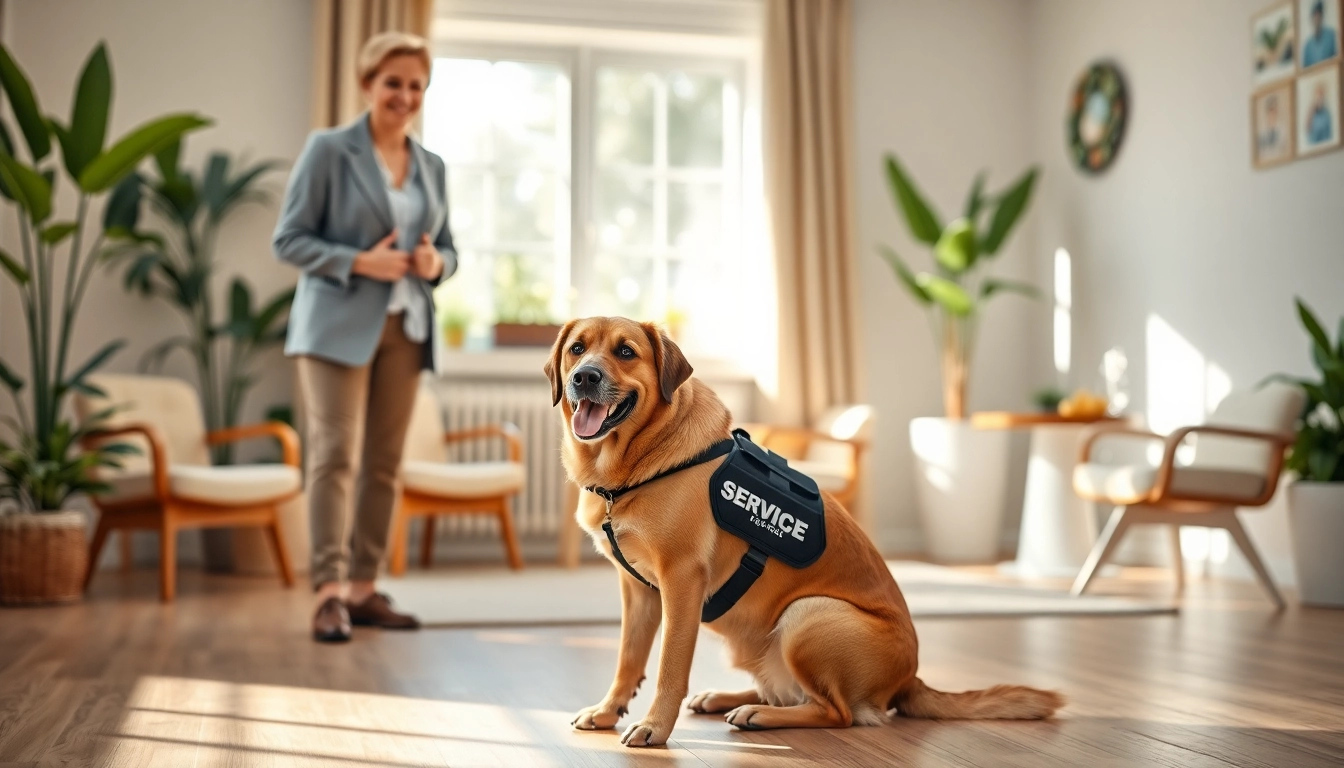Understanding the Need to Buy a Service Dog
In an increasingly fast-paced world, many individuals are turning to support animals for various needs. As emotional or psychiatric support creatures gain recognition, the demand for trained service dogs continues to soar. A common question among prospective buyers is whether they should buy a service dog. This guide delves into the essentials of service dogs, revealing their capabilities, benefits, and misconceptions.
1.1 What is a Service Dog?
A service dog is a specially trained canine that assists individuals with disabilities by performing specific tasks. Unlike ordinary pets, these dogs undergo rigorous training to safely and effectively support their handlers in navigating daily challenges. Typical tasks performed by service dogs include guiding individuals with visual impairments, alerting those with hearing issues, and providing stability for those with mobility challenges. The training is often detailed and extensive, aimed at ensuring that the dog can respond appropriately to the handler’s needs while remaining calm in public settings.
1.2 Benefits of Having a Service Dog
Owning a service dog can significantly enhance an individual’s quality of life. Some of the key benefits include:
- Increased Independence: Service dogs empower their handlers to accomplish daily tasks they might otherwise struggle with, promoting a sense of autonomy.
- Emotional Support: The companionship offered by service dogs can alleviate feelings of loneliness and anxiety, providing emotional comfort during distressing times.
- Improved Social Interaction: Service dogs can serve as social facilitators, making it easier for handlers to engage with others and participate in communal activities.
- Safety and Security: Depending on the service dog’s training, they can help in emergencies, whether it’s alerting to a medical issue or providing assistance during fall-related incidents.
1.3 Common Misconceptions about Service Dogs
Despite their benefits, several myths prevail around service dogs that can mislead prospective owners. Here are a few common misconceptions:
- All Dogs Can Be Service Dogs: Not every dog possesses the temperament and skills required to be a service dog. Specific breeds and individual dogs are often better suited for this role.
- Service Dogs Are Just Pets: Although service dogs offer companionship, they have a specific job to perform, which distinguishes them from typical pets.
- You Can Train Your Pet to Be a Service Dog: While some individuals may attempt to train their pets for service work, professional training is crucial to ensure the dog’s appropriate response to various situations.
Factors to Consider Before You Buy a Service Dog
Before making the decision to buy a service dog, potential owners should assess multiple factors that impact their choice and the dog’s future well-being. By evaluating these aspects beforehand, it becomes easier to find a dog that suits specific needs.
2.1 Assessing Your Needs and Lifestyle
Every individual has unique requirements affecting the type of service dog they may need. The first step is to evaluate your lifestyle, including:
- Your Disability or Condition: Determine the kind of assistance you will require from the service dog. Different disabilities may require different skill sets from a dog.
- Daily Routine: Consider how a service dog fits into your daily life. Will you be able to provide ample time and attention to the dog, including training and activities?
- Activity Level: Assess how active you are, as certain breeds may better complement your lifestyle than others.
2.2 Understanding Training Requirements
Service dogs require comprehensive training, which is often tailored to the specific needs of their handlers. Understanding the training process is essential for potential buyers. Key points include:
- Types of Training: Training can involve various skills, such as task training, public access training, and behavior training. Some service dogs may require more specialized training depending on the handler’s condition.
- The Importance of Professional Training: Seek certified trainers who specialize in service dogs. Professional training ensures that the dog will perform necessary tasks effectively and behave appropriately in public spaces.
- Commitment to Ongoing Training: Training doesn’t stop once you buy a service dog; continuous education and reinforcement are necessary to maintain the dog’s skills.
2.3 Financial and Time Commitments
Financial and time commitments are crucial considerations before buying a service dog. They may include:
- Initial Purchase Costs: The price of a service dog can vary widely, influenced by factors such as breed, training, and source. Understanding these costs upfront can aid in budgeting.
- Training Costs: Beyond the initial purchase, a significant investment in training may be required, especially for specialized service requirements.
- Ongoing Care Expenses: Regular expenses, including veterinary care, food, grooming, and supplies, must be factored into the overall financial commitment.
- Time for Training: Be prepared to dedicate time for both initial and ongoing training sessions with the dog to foster a strong bond and teach necessary skills.
How to Buy a Service Dog: The Process Explained
Buying a service dog is a thoughtful and structured process that requires careful planning and consideration. This section aims to outline the essential steps involved.
3.1 Researching Reputable Breeders and Organizations
Research is crucial in ensuring that you choose a reputable source to obtain a service dog. Begin by:
- Identifying Authorized Organizations: Look for organizations that are recognized by national or regional service dog accreditation bodies to ensure compliance with training and placement standards.
- Reading Testimonials and Reviews: Speak with previous clients and read the reviews to assess the success stories related to the organization.
- Visiting Facilities: If possible, visit the organization in person to see the conditions under which the service dogs are raised and trained.
3.2 Questions to Ask When Buying a Service Dog
Once you’ve narrowed down potential sources, it’s essential to ask probing questions before committing. Consider these inquiries:
- What Training Programs Do You Offer? It’s vital to understand the extent and type of training the dog has undergone.
- What Is the Dog’s Background? Gather detailed information about the dog’s lineage, including health screenings and any behavioral assessments.
- Can You Provide References? A reputable source should readily provide the names of previous clients who can vouch for their services.
3.3 The Application and Adoption Process
Understanding the application and adoption process is crucial when buying a service dog. Expect the following steps:
- Application Fill-Out: Most organizations will require you to fill out detailed applications that include personal information and the specific needs you have for a service dog.
- Approval Process: Expect a thorough assessment, which may include interviews and home evaluations to ensure that you and the dog are a good match.
- Adoption Fee: Be prepared to pay an adoption fee, which often covers training costs and initial veterinary care.
Preparing for Your New Service Dog
Once you have secured your service dog, preparing for its arrival is crucial to ensure a smooth transition into your home and lifestyle.
4.1 Setting Up Your Home
Creating a welcoming and safe environment for your service dog involves several considerations:
- Space Evaluation: Ensure you have enough room for the dog to move around comfortably and have a designated area for sleeping and resting.
- Required Supplies: Prepare necessary supplies, including food, dishes, a leash, harness, and bedding, before the dog’s arrival.
- Home Safety: Remove hazards or unsafe items that the dog may encounter, ensuring the home is a safe space for your new companion.
4.2 Initial Training and Bonding
As your new service dog settles into your home, bonding and initial training are essential steps:
- Establish Routine: Create a consistent routine for feeding, walking, and training to help your dog understand expectations.
- Initial Commands: Start with basic commands that reinforce obedience and allows for better communication between you and your dog.
- Socialization: Gradually introduce your service dog to various environments and people to improve its comfort level and adaptability.
4.3 Understanding Legal Rights and Responsibilities
As a service dog owner, it’s essential to be aware of the legal rights associated with having a service dog:
- ADA Regulations: Familiarize yourself with the Americans with Disabilities Act (ADA) guidelines that outline where service dogs are allowed and the rights as a handler.
- Rights in the Community: Understand the social implications of taking your service dog into public spaces, including housing and travel regulations.
- Responsibilities: Be prepared for the responsibility that comes with owning a service dog, including ensuring proper care, training, and behavior compliance in public settings.
Nurturing the Partnership with Your Service Dog
Maintaining a positive relationship with your service dog extends beyond purchase and initial training. Ongoing commitment is essential for both your and your dog’s well-being.
5.1 Ongoing Training and Support
The journey does not end after acquiring a service dog; ongoing training and support are critical. Here’s how to keep your training on track:
- Regular Training Sessions: Schedule periodic training sessions to reinforce skills and introduce new tasks as needed.
- Engage with Trainers: Work with trainers who can provide continued guidance and advice, addressing any challenges you may encounter.
- Join Support Groups: Connecting with other service dog handlers can offer you emotional support, practical tips, and shared experiences throughout the journey.
5.2 Improving Your Daily Life with a Service Dog
Integrating your service dog into daily life offers various advantages. Some suggestions include:
- Incorporate Tasks into Daily Routines: Make full use of your service dog’s abilities by integrating their tasks into your daily activities.
- Explore New Environments: Engage in activities and visit places you previously found challenging due to your condition, empowered by your service dog.
- Utilize Online Resources: Look into online forums and resources to discover new strategies and support systems that enhance your experience with a service dog.
5.3 Building Community and Finding Resources
Establishing a sense of community can enrich the service dog experience. Here are some ways to connect:
- Attend Events: Participate in events specific to service dogs, including seminars, workshops, and social gatherings.
- Online Networking: Engage with online communities through social media or dedicated websites to exchange knowledge and experiences with other handlers.
- Resource Sharing: Share local resources, training opportunities, and community support contacts with fellow service dog users to cultivate a cooperative environment.



